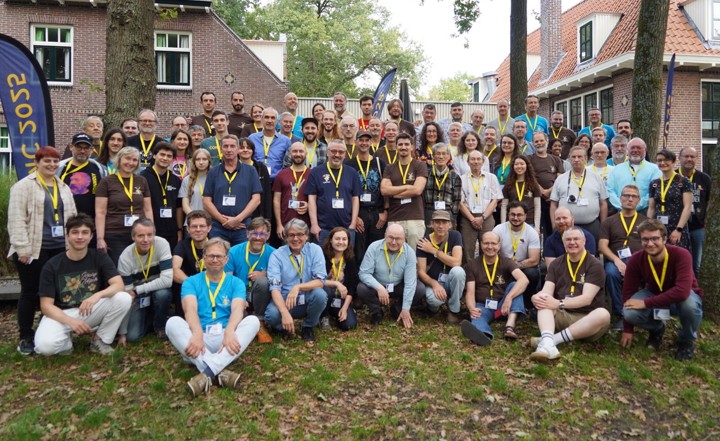
This year, the IMC took place from September 18th to 21st at the StayOkay Hotel in Soest, the Netherlands. As always, many participants joined both on-site and online, determined to share their research and celebrate the spirit of the IMO. In addition to the lectures, two workshops were held: one on radio observation and one on spectroscopy.
The radio workshop, on Wednesday 17th, focused on head echoes. Discussions covered data processing methods, differences due to transmitters, and the physical processes a meteor undergoes over timescales from picoseconds to minutes.
The spectroscopy workshop, held Thursday morning, explored theoretical aspects with homemade spectroscopes using various cameras, gratings, and light sources. Participants compared spectra, spectroscopes components, and tested their knowledge with simple experiments like looking for some spectroscopic features of a lighter.
After this, the first official session opened this year IMC with talks on transit events by dust disks and the DART mission, which could lead to the first meteor shower created by humans.
The second day was dedicated to annual meteor showers, their dynamics, origins, and the importance of precise orbital data. Software and hardware sessions presented advances in machine learning for meteor identification, an app for shower observations, a light curve database, and even artificial meteoroids. Updates on radio data analysis followed. After this day full of lectures and the IMO General Assembly Meeting, participants still had to keep their brains active, as a special meteor-themed pub quiz was organized in the evening.
On the third morning, several projects were presented: an in-depth study on the collection and analysis of micrometeorites, the case of 2024 YR4, which triggered alarms at the Planetary Defence Office due to its potential risk of impacting Earth, the link between the study of space debris and meteors, and an update on the activities of ESA’s Planetary Defence Office. Optical researchers also discussed their observation systems and the methods currently being explored to improve them. In the afternoon, the traditional IMC excursion took place. Under typically Dutch weather (rain and sunshine), participants visited the nearby city of Utrecht, which quickly became a scientific hub in the country’s history. The first stop was a guided tour of the Speelklok Museum, where participants enjoyed hearing Dolly Parton tunes played by a 19th– or 20th-century mechanical organ. Afterwards, the group headed to the Utrecht Observatory, where this year’s organizing team presented the site and its instruments. The day concluded with a friendly barbecue and an evening around the campfire.
The final day focused on spectroscopy and its role in refining ablation models.
Above all, this IMC once again highlighted the value of a community where professionals and amateurs come together to share their passion in a welcoming and inclusive atmosphere. As tradition demands, the meeting closed with the IMC song.
The next edition will take place from September 24th to 27th 2026 in Barcelonette, France. See you there!



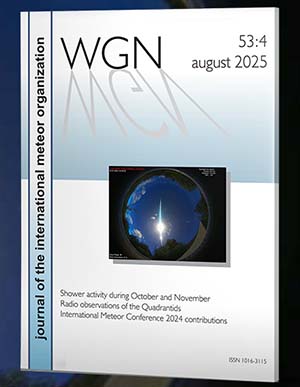
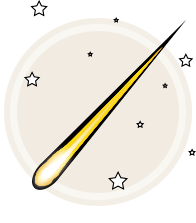 You saw something bright and fast? Like a huge shooting star? Report it: it may be a fireball.
You saw something bright and fast? Like a huge shooting star? Report it: it may be a fireball. 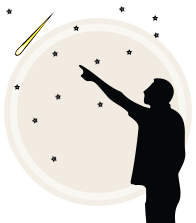 You counted meteors last night? Share your results with us!
You counted meteors last night? Share your results with us!  You took a photo of a meteor or fireball? You have a screenshot of your cam? Share it with us!
You took a photo of a meteor or fireball? You have a screenshot of your cam? Share it with us! 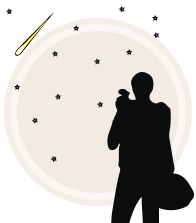 You caught a meteor or fireball on video? Share your video with us!
You caught a meteor or fireball on video? Share your video with us!
3 comments
Hi,
That was a great review and it really was a great IMC! The program was varied and extremely interesting and the socialising was fantastic. I talked to more people about more things than I’ve ever done at an IMC!
What really surprised me was a comment made by Marc (the treasurer) during one of his announcements, that only about 20% of the attendee’s were actual members of the IMO!
To me, this suggested a few things…
That the IMC is attracting so many non IMO members must be be because it’s offering something. Plainly people wouldn’t come if it didn’t. I think the most important thing is that it’s open to all. An event where amateurs and professional meteor astronomers can meet on a level playing field in a very friendly environment.
I have to ask then, where are all the IMO members?! Is it a case of what I used to think myself, it’s too far away, too difficult to get too and maybe, unfortunately, too expensive. I know the organisers go to great lengths to minimise costs and I believe some financial help is available in particular circumstances. So ask if you need to.
As for the travel, it’s part of the fun.
Perhaps its a matter of confidence, are my own observations or pictures “good enough” or” important enough”? All I can say on this is YES. Everybody’s contribution is treated with the same respect and value. Those visual observations are just as valuable as any other technical observation because they ALL add to the sum of our knowledge. Is it language?, english is the usual standard but even if you don’t speak english there are so many nationality’s present there’s probably somebody who can translate so it’s not that big a deal.
Finally, even if you are a casual observer, a hobbyist or even a non scientist interested in meteors then come along for the chat, the camaraderie and dare I even say, the singing. Nobody is under any obligation to stand up and make a formal presentation. if it’s a hobby it’s there to be enjoyed, not endured. Just being there and soaking it all in is the best part of the experience.
As the song say’s “you’re very welcome to the IMC”! (…there’ll be a video somewhere…)
So, if you haven’t been to an IMC you don’t know what you’re missing!
See you next time!
Bill.
Bill, this number is probably not correct.
I could count at least 45 IMC participants that are in the IMO members list, so more than half were IMO members.
I agree with you other thoughts.
Hi,
20% did seem very low, hence my comment. Your number seems a bit more realistic but it still means about half are not members so still some work to do….
It always surprises me how many people do attend regularly but turn out not to be actual IMO members. I’ve tried a bit of persuasion myself.
Anyway, the more the merrier, quite literally, at the IMC!
Cheers,
Bill.